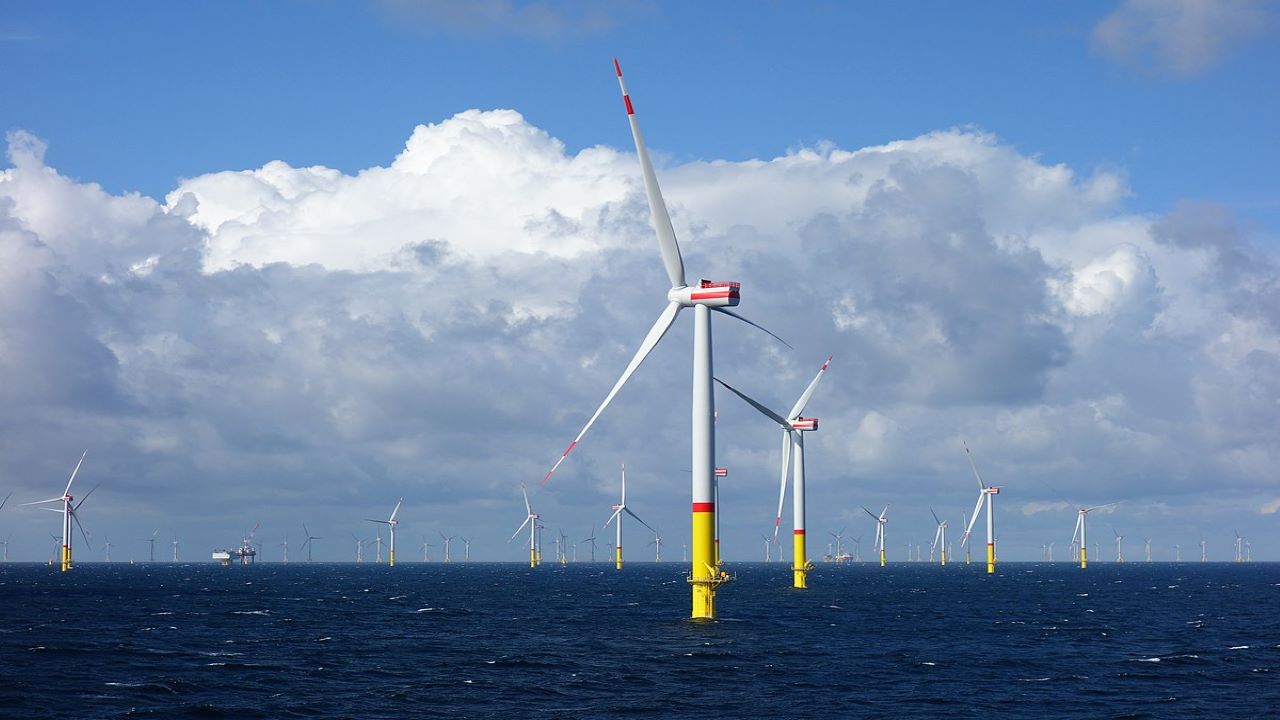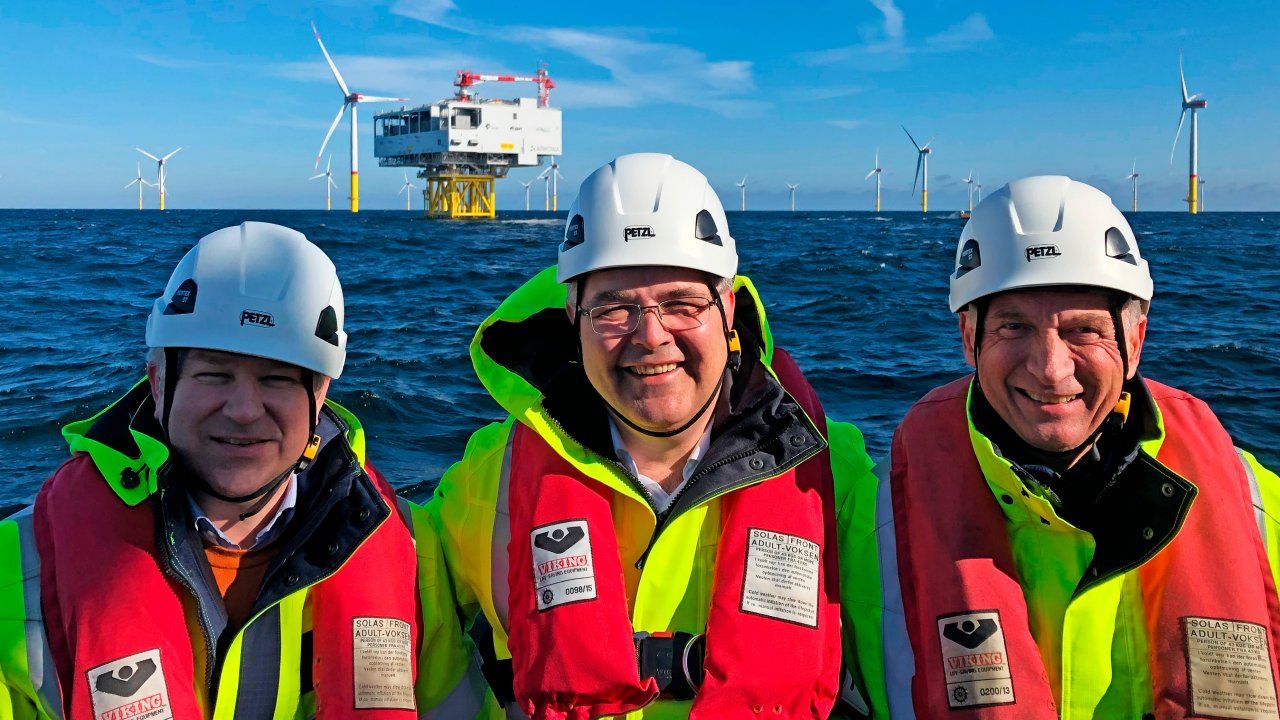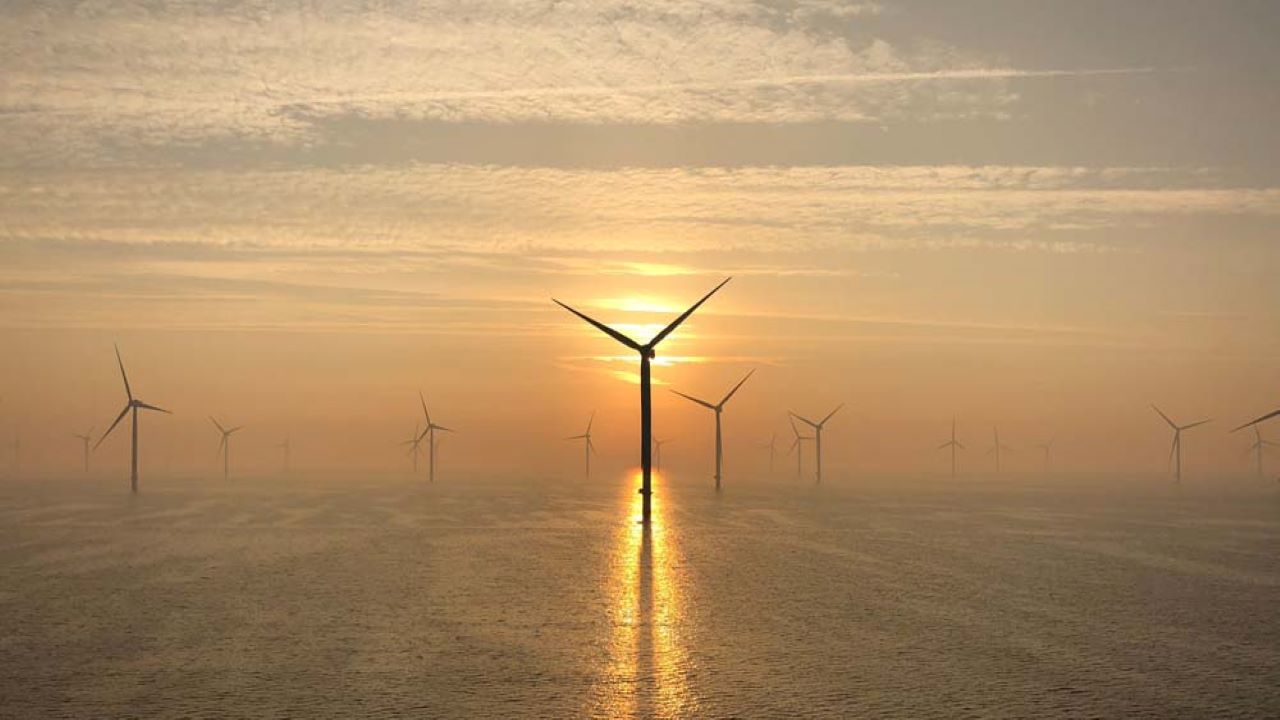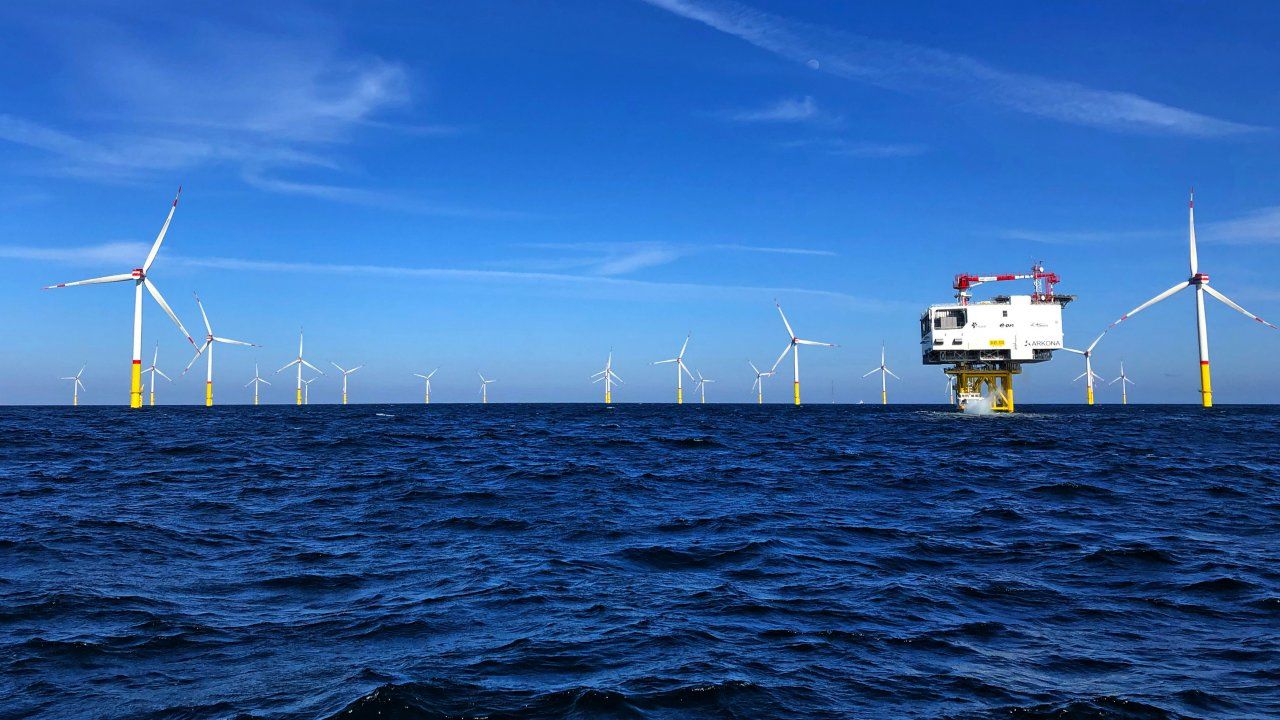Arkona offshore wind farm, also known as Arkona Becken Südost, is a 385MW offshore facility built by E.ON in partnership with Norwegian energy company Equinor (formerly Statoil). It is located 35km north-east of Rügen Island in the Baltic Sea.
Statoil purchased a 50% stake in the project from E.ON and the two partners announced their final investment decision on the wind farm in April 2016. The construction of the wind farm began in August 2016, and the facility was commissioned in April 2019.
The $1.4bn project was designed to supply renewable power for approximately 400,000 homes and offset 1.2 million tonnes (Mt) of carbon dioxide emissions a year.
It created up to 400 construction jobs and 50 direct permanent jobs in addition to 100 indirect jobs.
Arkona offshore wind farm make-up
The wind farm has a total of 60 Siemens SWT-6.0-154 direct-drive wind turbines rated at approximately 6MW each. The turbines have a rotor diameter of 154m and 75m-long rotor blades, which enable them to provide an 18,600m² swept area.
The three-bladed turbines have a speed range between 5rpm and 11rpm. They rest on monopile foundations that were installed at depths, ranging between 23m and 37m.
The turbines are spread over an area of approximately 40km² and are interconnected by offshore cables.
Arkona Becken Südost wind farm construction
Major components of the offshore wind farm were pre-assembled on the wharf of the Port of Sassnitz in Mecklenburg-Vorpommern, which served as a logistics base for the project, during the construction phase.
The components from the wharf were loaded onto ships for installation in the water. The port developed the necessary wharf space and berths for the rapid loading and unloading of the project components.
As of September 2018, 44 wind turbines were installed and the first electricity was supplied to the German grid during the same month.
The construction of the wind farm was completed in October 2018 and all turbines were installed in less than three months. The turbines reached peak production in 2019.
Grid connection
The wind farm is installed with a 5,000t electric offshore transformer station, which will deliver the electricity generated by the wind turbines to the land via sea cables.
The substation is operated by the wind farm operating station in the Port of Mukran, Sassnitz, while the monitoring and controlling of the operations are performed by E.ON’s Offshore Marine Coordination Center in Hamburg.
The Arkona wind farm was connected to the grid node in Lubmin through the Ostwind 1-2 (System 261) and Ostwind-1-3(System 265 &281) offshore cable construction project developed by 50Hertz.
Contractors involved
The electricity produced by the wind farm is purchased traded by Engie under a four-year power purchase agreement.
Siemens was awarded the contract to supply, install, and commission the turbines for the Arkona offshore wind farm, which represented the first order for the company’s large direct-drive turbines for a Baltic Sea wind farm.
The contract for Siemens further includes turbine servicing and maintenance for two years in collaboration with a team from E.ON. The Siemens team monitors the turbines from its remote diagnostics centre in Brande, Denmark.
E.ON awarded the contract for inter-array cabling to interconnect the turbines to VBMS in April 2016.
A2SEA was awarded the contract to install the turbines, which will be performed using its offshore installation vessel Sea Challenger.
Van Oord was contracted to supply and install the monopile foundations, including the transition pieces, using its heavy lift installation vessel named Svaven by 2017.
DHI Group provided hydrography and metocean data for the project in 2010. Strabag Offshore developed a wind measuring platform to help with deciding the layout of the turbines and foundations.
Fugro Consult performed the main geotechnical investigation for the project, under a contract awarded by E.ON in 2011, using its jack-up vessel Excalibur and geotechnical drilling vessel MV Fugro Commander. Fugro drilled 79 boreholes into the seabed to perform the necessary tests at multiple locations for the offshore turbines and the transformer substation.
Nexans provided 76km of energy cables to E.ON for the Arkona wind farm.
In June 2016, DNV GL secured the project certification contract for the new wind farm. The contract included inspection stages throughout manufacturing, transport, installation, and commissioning of the wind farm.







